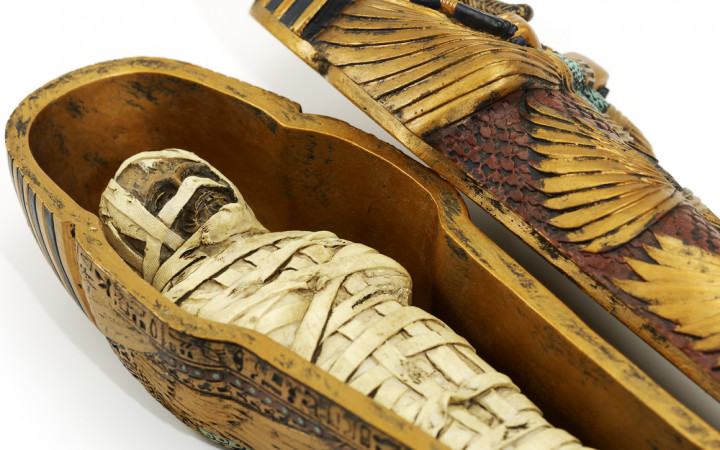Today’s Wonder of the Day was inspired by Sydney. Sydney Wonders, “Why did people wrap mummies?” Thanks for WONDERing with us, Sydney!
King Tut Day is celebrated each November 4 to remember that date in 1922 when the tomb of Egypt's “child king" was discovered. More than 3,000 years ago, Tutankhamun became the King of Egypt when he was just nine years old.
His rule came to an end less than 10 years later upon his untimely death. Since then, he has become one of the best-known Egyptian kings.
The researchers who uncovered his tomb found a stone sarcophagus that held three coffins nested inside each other. The final coffin was made of solid gold.
It held the mummy of King Tut, which had been preserved for more than 3,000 years. Unlike in the movies, King Tut's mummy did not rise and begin chasing the researchers around the tomb.
It's easy to see why mummies make such great movie villains, though. In a way, they're like real ghosts you can see and feel.
A mummy is a human being whose body has been preserved long after death. Usually, a person's body decomposes slowly over time after death, leaving only a skeleton.
Sometimes, though, the decomposition process is slowed. For example, if conditions are very cold or dry or there's a lack of oxygen, a body may not fully decompose for thousands of years.
Well-preserved bodies have been found in the ice of glaciers, the oxygen-depleted bottoms of peat bogs, and the dry ground of the desert.
Although ancient Egypt is famous for its mummies, the Middle East does not have a mummy monopoly. Over the past 200 years, scientists, researchers and explorers have found mummies all around the world.
The ancient Egyptians were pioneers in the field of embalming, though. Embalming is the process of preserving the body after death — or creating an artificial mummy.
The ancient Egyptians were very interested in the afterlife, perhaps because life in Egypt's hot desert was usually very difficult. They sought ways to preserve the body after death because they believed the body was tightly linked to the Ka, which was one of three life spirits that defined a person.
If the body was destroyed, they believed the spirit would also be destroyed and death would be final. If the body was preserved, immortality (eternal life) was possible.
The ancient Egyptians refined their art over thousands of years. The end of the process usually involved wrapping the body in heavy linen bandages.
The Egyptians believed the bandages helped to keep moisture away from the body. The bandages also allowed those creating the mummy to shape it into the most lifelike shape possible.
When the mummy was all wrapped up, a funerary mask was usually placed on its head. The face of the mask was often a likeness of the deceased or an image of an Egyptian god.
The Egyptians believed this final step was an important ritual in the passage to the afterlife. They thought it helped the spirit find the correct body among the many stored in the tombs.
Today, scientists who find mummies and unwrap them — yes, they do unwrap them! — can learn a lot about ancient societies. They study the mummified remains and the other items buried with the body to explore what life must have been like for those that lived long, long ago.




